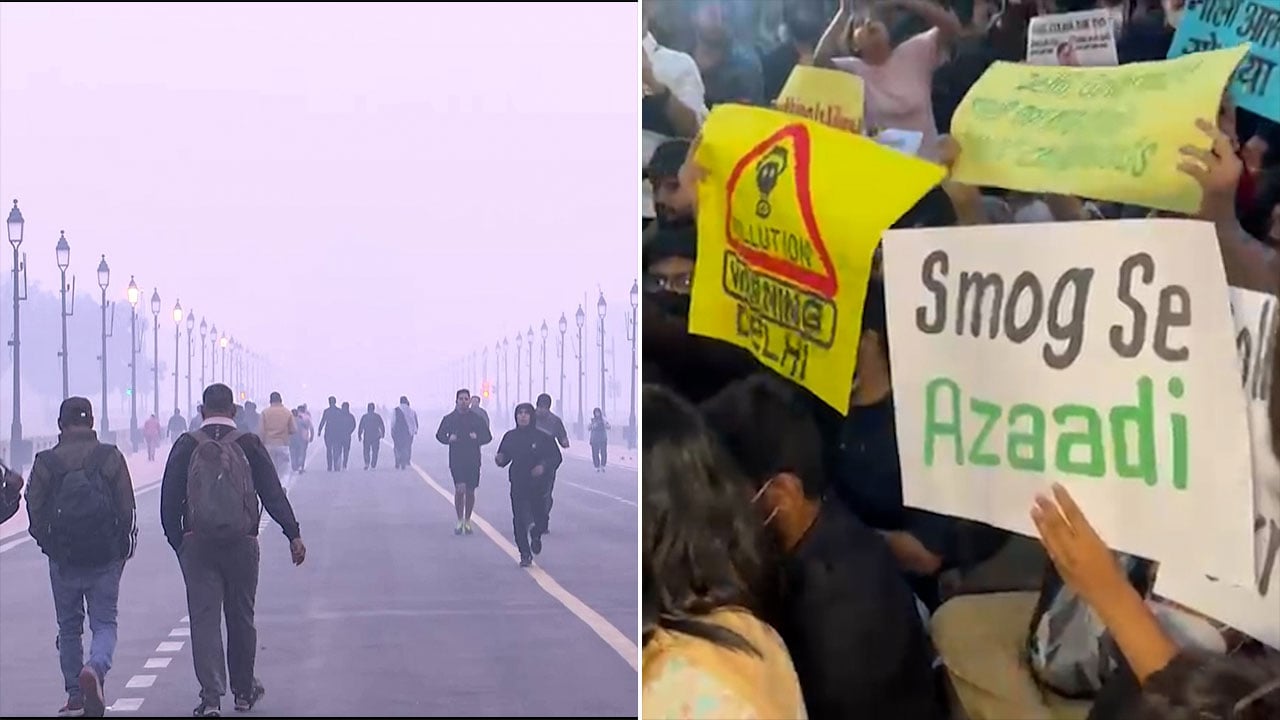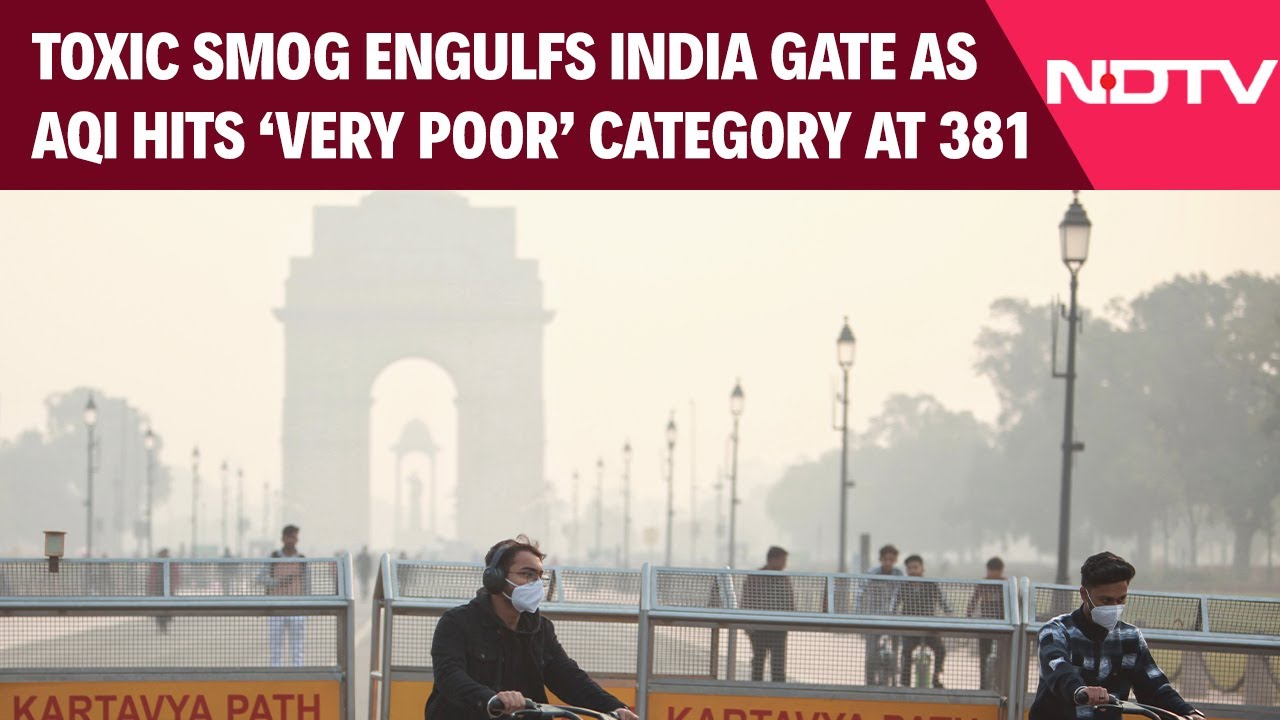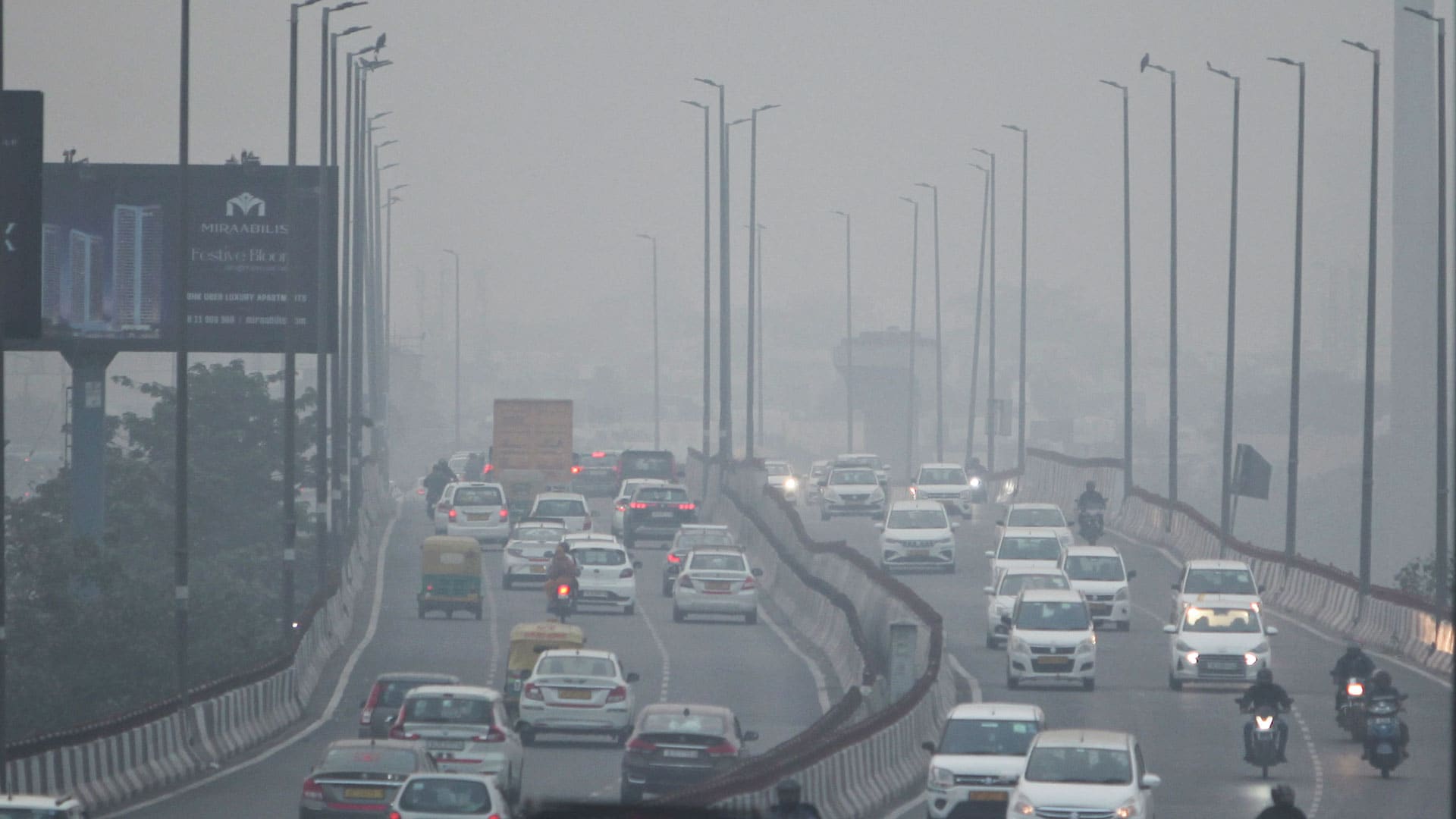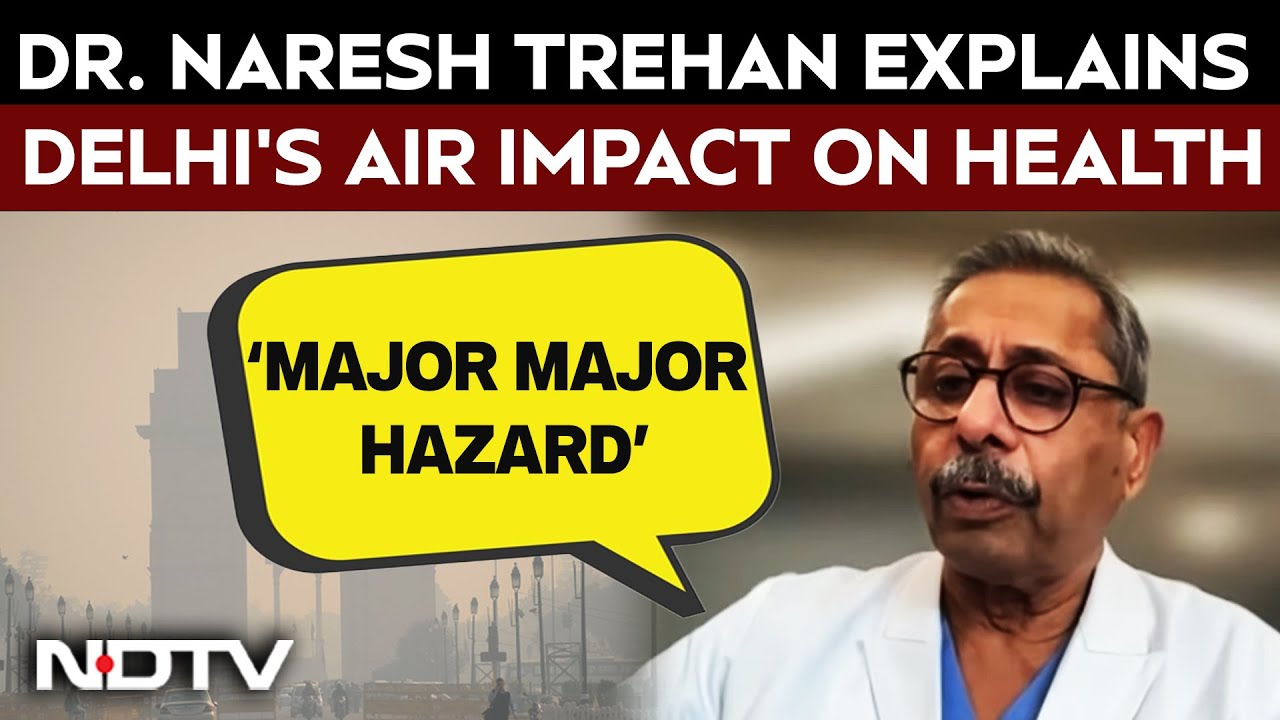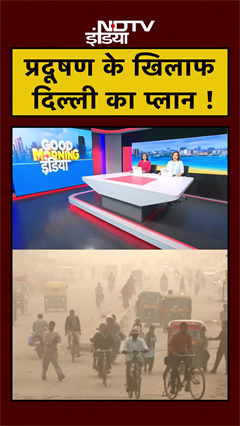- Home/
- Delhi's Air Quality Worsens, Hits 'Severe Plus' Category
Delhi's Air Quality Worsens, Hits 'Severe Plus' Category

Delhi's air quality plunged into the 'severe plus' category on Thursday, with a 24 hour average Air Quality Index (AQI) of 451 recorded at 4 pm, according to the Central Pollution Control Board data.
The city witnessed dangerously high levels of PM2.5, the primary pollutant, with 32 of the 35 monitoring stations recording air quality in the severe plus category.
Some areas recorded AQI readings as high as 470. The PM2.5 particles, measuring 2.5 micrometers or less in diameter pose significant health risks as they can penetrate deep into the lungs when inhaled.
The national capital remains under Stage IV of the Graded Response Action Plan (GRAP), which includes the most stringent anti-pollution measures.
The measures involve a complete ban on construction activities and the entry of non-essential polluting trucks into the city.
GRAP categorises air quality into four stages: Stage I (Poor, AQI 201-300), Stage II (Very Poor, AQI 301-400), Stage III (Severe, AQI 401-450), and Stage IV (Severe Plus, AQI above 450).
The Indian Meteorological Department (IMD) has issued a yellow alert for Friday, warning a very dense fog. The maximum temperature on Thursday was recorded at 23 degrees Celsius, slightly above the season's normal, while the minimum temperature was five degrees Celsius, three notches below normal, the department said.
(Except for the headline, this story has not been edited by NDTV staff and is published from a syndicated feed.)
also read
"Every 3rd Child Has Damaged Lungs": Protest Over Air Pollution In Delhi
Press Trust of IndiaDelhi Air Quality Nears "Severe" Category, Many Areas Already In Red Zone
Indo-Asian News ServiceDelhi Chief Minister Urges Carpooling, Work From Home Amid 'Severe' AQI
Reported by Shreya Ghosh, Edited by Srishti Kapoor
Latest Stories
- Press Trust of India | Sunday November 09, 2025 , New Delhi
Scores of people, including parents and environmental activists, staged a protest at the India Gate on Sunday against the worsening air quality in the national capital.
- Written by Krati Purwar | Sunday November 09, 2025
According to the nutritionist, curcumin in turmeric is "your smog-fighting superhero".
- Written by NDTV Lifestyle Desk | Sunday November 09, 2025
Since the air in Delhi-NCR has become hazardous to breathe, you need to take a few measures to keep yourself and loved ones safe
- Indo-Asian News Service | Sunday November 09, 2025
Delhi-NCR woke up to a thick blanket of smog on Sunday as the Air Quality Index (AQI) plunged into the 'very poor' category across several parts of the city. In some areas, the situation was even grimmer, as AQI readings slipped into 'severe' zone
- Reported by Shreya Ghosh, Edited by Srishti Kapoor | Saturday November 08, 2025
As Delhi's air quality entered the "severe" category in multiple areas on Saturday, Chief Minister Rekha Gupta announced a targeted push to eliminate traditional cooking fuels in slum clusters, while ramping up citywide anti-pollution drives.
................................ Advertisement ................................
Latest Videos
Opinion
Opinion | Why Indians Have Just Given Up On Air Pollution CrisisTanushree Ganguly
Friday December 20, 2024While some may argue that people in Delhi are now more aware of air pollution than they were a decade back, my rebuttal would be that awareness does not mean that people are concerned.
Opinion | You Must Outrage Over Filthy Air More Than Once A YearJyoti Pande Lavakare
Tuesday December 10, 2024Delhi welcomed us with monsoon rains and mangos. We were home. Fast forward a couple of years, in the winter of 2012, I found myself in denial about something other parents, mostly expats, were calling toxic air.
Opinion | Delhi's Air Pollution Situation Is Like A Bad MarriageNishtha Gautam
Friday November 22, 2024On a good day, such as today, the AQI reading in Delhi is 407. We are jubilant at the sickly sunshine trickling through the slightly dissipated smog. At least its not 1600.
दिवाली... पराली... सियासी जुगाली!Ashwini kumar
Monday November 18, 2024दिल्ली-एनसीआर में प्रदूषण का समाधान तो आज तक मिला नहीं. हर साल चिंतित होकर हम-आप सांसों की तकलीफ के साथ-साथ दिल और ब्लड प्रेशर के मरीज भी क्यों बनें?
घर में कैद बुजुर्ग और हांफते लोग, दिल्ली की सांसों में घुला ये कैसा रोग?Nidhi Kulpati
Friday November 08, 2024हमारी हवा जहरीली हो रही है. गुरुवार की शाम को जब मैं इस मुद्दे पर लिखने बैठी तो AQI लगातार 400 पार जाकर दम घोंट रहा था. बहुत लोगों को यह मामला बोरिंग लगे, लेकिन जब आप अपने साथ काम करने वालों को खांसते-हांफते देखते-सुनते हैं, तो चिंता होने लगती है. सुबह उठते ही दरवाजे खिड़कियां खोलने के लिए डॉक्टर मना कर रहे हैं. बड़े बुजुर्गों के लिए तो मॉर्निंग वॉक बाहर की दुनिया से सीधे संपर्क का ज़रिया है, लेकिन डॉक्टर इसकी भी मनाही कर रहे हैं.








